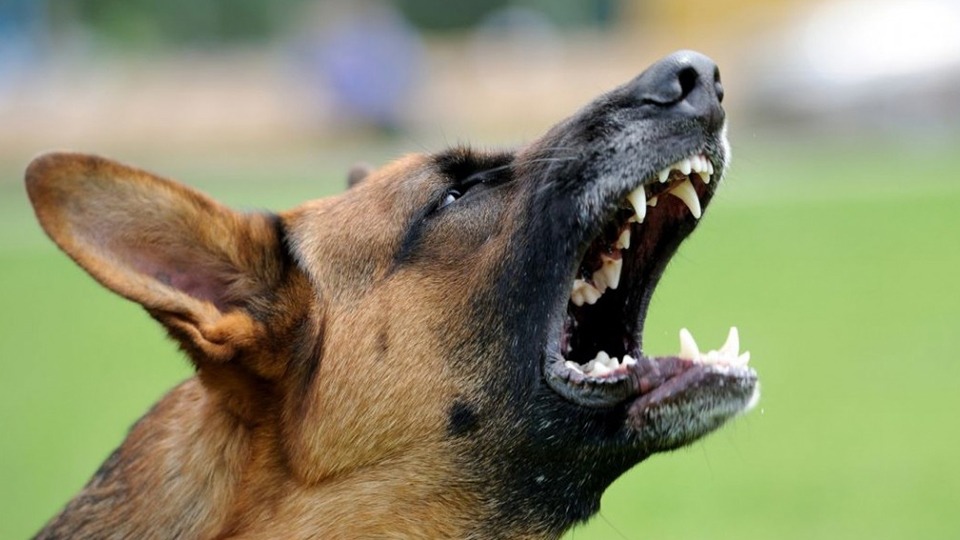I have been asked many times for my opinion on situations where dogs attack people. There have been numerous events around Newcastle over the last few months to highlight the high order trauma that is associated with such interactions, including the attack of three people in New Lambton, and the case where police were forced to shoot a dog that had been set upon them by a criminal in Marks Point.
One of the most agonisingly terrible incidents was the poor 8 year old girl who lost her arm in a violent interaction with an Alaskan Malamute in August, which was most responsibly reported by the Newcastle Herald
Valentine dog attack: Girl, 8, loses hand. More to come. http://bit.ly/1EsFkbB
Girl, 8, loses hand in Valentine dog attack
AN eight-year-old girl has lost a hand and remains in hospital in an unknown condition after she was attacked by a dog in front of other children at Valentine on Saturday afternoon.
theherald.com.au
Now I must state at the outset that I do not have enough information about any of these specific attacks to provide critical appraisal of their individual circumstance, and this blog specifically will NOT enter the territory of apportioning blame in these cases. And I, more than many, understand that canine aggression is a highly emotionally charged issue for many people. But there are important points I can make about dog attacks in general, which I feel come with the authority of a lifetime of working as a veterinary profession with canines of all breeds, roles and temperaments.
The whole topic of canine aggression is immensely complex. There are almost no universal simple answers, and each case of aggressive canine behaviour has its own complicated array of factors that lead to an end point of human injury. There are some examples of canine aggression that are considered appropriate, where it serves a protective or beneficial purpose for the dog. The internet is replete with news stories of dogs saving their owners with their “appropriate” aggression to a perceived dangerous third party, such as snakes, cows, bears, or intruders. The key here is that dogs do NOT understand our rather fickle definition of appropriate or inappropriate aggression. The two dogs involved in the Marks Point incident, one a police dog and the other belonging to the felon, both behaved aggressively to each other and the humans they perceived to be dangerous to their pack or family. One is lauded as a hero, and one is shot and killed as a dangerous dog. These are our human interpretations of the situation, and as far as the dogs are concerned, neither is entirely true!
We must understand that human civilisation has had a massive change in the last century that has had a huge impact on interactions between people and dogs. We have gone from a largely agrarian, rural population to an almost completely urbanised population, and as we have become urbanised, I feel that in only a few generations we have lost our familiarity with the complete suite of normal canine behaviours. There once was a time children would wander the countryside in small gangs with dogs attached, and they would experience aggressive dog interactions regularly, and intuitively learn the signs of impending aggression as well the speed and ferocity of such interactions. These days people can go a LIFETIME and never experience such events, and when they do, they are profoundly shocked and emotional, and are unable to process the nuanced events that lead to the aggression.
As we have become less familiar with normal dog behaviour, we have let the similarities in canine and human behaviour to lead us to excessive anthropomorphism which can be as dangerous and confusing for dogs as it is for people. We attribute intentions and emotions to dogs at the time they become aggressive based on what we think people would do, which often have nothing to do with the real reason in the dog’s brain.
Consider this hypothetical scenario: a young family with a young adult dog as a pet. She was acquired as a rescue a couple of years before the first child was born, and she has had no training or socialisation. She has always been a little nervous around strangers and this has been attributed to the time before she came to this family, but she has never demonstrated any aggressive behaviours. She is a mid-sized cross-breed with a beautiful long coat, and she has never given any sign that she does anything but adore the children. The children are under 4 years old and until very recently have never been left alone with the dog. One day the phone and the front door bell ring at the same time and the children are left alone with the dog for a few minutes, and she repeatedly bites one of the children so severely they have to be taken to hospital. The family are confused and distraught, and the media have a field day. The poor dog is euthanased as the papers report “family pet turns on children in vicious unpredictable attack with no explanation”.
Except it is entirely predictable, and has the most banal of explanations. A pet dog does not see their family as people vs dog – they see us as all different shaped members of the same family. And they expect us to understand “dog” communication and to play by “dog” rules, especially if they have been poorly socialised to expect anything different. In the dog world puppies get a bit of a free pass – they are allowed to do things that older dogs would be chastised for! We have all seen puppies playing and pulling at the neck or ears of an older dog that just lets it happen. But once pups reach a certain age and size, they are expected to begin to obey the rules – the dog rules. They are given subtle body language signals that certain behaviours are no longer accepted, and they reply with certain signals to indicate they get the message: they adopt submissive and inoffensive body positions such as averting their gaze, lying small on the ground with their belly exposed and making gentle whimpering noises.
So when our hypothetical dog is left alone with the children she becomes increasingly anxious – since she has been left alone with an important family responsibility. Her anxiety makes her urgent and insistent, and when one of the children grab the long fur around her tail she turns quickly and growls. She expects the child/pup to not make direct eye contact, to cower and roll over on the ground and make soft respectful noises. They should know the rules. Instead the child is startled, and stands to his full height and stares at the dog since he has never seen this behaviour before. Our dog growls and lunges a nip at the child/pup to reinforce her clear (at least to her) message, but the child screams and raises his hands and begins moving rapidly in short, jerky, unpredictable patterns. These are all signals that directly challenge the authority of the dog and her level of anxiety is rising off the charts. She grabs the poor child’s forearm and attempts to force him to the ground, where in her mind he should be. But he struggles and screams and hits out at the dog and tries to get up to escape. The dog just tries again to force the behaviour she expects from the child only with more vigour as she now feels his behaviour is not just insolent, but he is directly challenging her place in the family. At this point the parents return and their authority causes the dog to stop and the child is rescued. The dog feels confused that the parents are angry at her because she was only doing what she was expected to do. She never understand what went wrong for the remainder of her short life.
Millions of pictures on the web further confuse the issue with “cute” images of children and dogs, many of which specifically demonstrate the dogs are nervous and worried. This anxiety may lead to completely preventable episodes of defensive aggression.
So what should we do to help prevent dogs from attacking people? We should depend on facts and not emotions or intuitions. The Australian Veterinary Association has prepared an extensive, evidence-based report which specifically details the problems and solutions of dog attacks in an Australian context. Did you know that 80% of serious wounds arising from dog bites are the result of people’s own dogs? Or that more than 65% of serious dog bites requiring hospital attention affect children under 12 years of age? Basing policy decision and regulation on science rather than reflex gut feelings is much more likely to make a dramatic difference to the pain and suffering caused by dog bites.
One of the common responses especially prominent in the mainstream media after an horrific attack is the promotion of simplistic solutions, such as the banning of particular breeds of dogs perceived as dangerous (so-called breed-specific legislation or BSL). It is my personal opinion, informed by research and personal experience, as well as the AVA’s formal policy that BSL is an ineffective response because:
• Breed on its own is not an effective indicator or predictor of aggression in dogs.
• It is not possible to determine with any precision the breed of the types of dogs targeted by breed-specific legislation by external appearance or by DNA analysis.
• The number of animals that would need to be removed to have a meaningful impact on hospital admissions is so high that the removal of any one breed would have negligible impact.
• Breed-specific legislation ignores the human element whereby dog owners who desire an “macho aggressive” kind of dog will simply substitute another breed of dog of similar size, strength and perception of aggressive tendencies.
There are quite a number of actions that can be taken to help limit the negative consequences of aggressive dogs. These actions focus on primarily on identifying and managing “trouble dogs”, before they reach the point they cause injury to humans. If such actions are coalesced into a legislative framework, then such a framework needs to be complemented by actual on-the-ground action steps including
- effective MANDATORY IDENTIFICATION by microchip as well as registration of all dogs
- mandatory reporting of dog aggression incidents to a national reporting system and DATABASE
- formal veterinary TEMPERAMENT TESTING can be encouraged by reduced registration costs, or can be mandated by animal control authorities in particular circumstances
- EDUCATION of the whole community including pet owners, breeders, but especially parents and children
- adequate resources (read MONEY) to ensure enforcement and compliance
So finally what practical steps can we take in our own families and communities?
- teach our children to never approach any dog without consent of the owner.
- teach children to never kiss or hugs dogs especially about the face.
- teach children the body language of a potentially aggressive dog including general tenseness or stiffening of the body, demonstrative licking of the lips, intense open-eyed stare with dilated pupils (black eyes), progressing to growling, snarling, and lunging.
Dogs have made an immeasurable positive contribution to human civilisation for at least 15000, and maybe as long as 60000 years since their domestication in Central Asia. We should celebrate their wonderful companionship which even today brings improved quality of life to innumerable people around the world. But we CAN improve the relationship, with benefits to both our dogs and fellow humans. We should not treat this responsibility lightly, and the benefits that result will mean less trauma and suffering for those potential future sufferers of preventable canine aggression.








